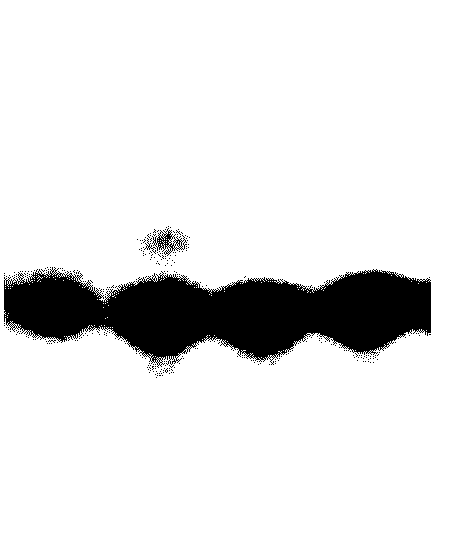Method for separating heparan sulfate from animal lungs
A heparan sulfate and lung technology, applied in the field of separating heparan sulfate, to achieve the effect of easy acquisition, simple process conditions and easy realization
- Summary
- Abstract
- Description
- Claims
- Application Information
AI Technical Summary
Problems solved by technology
Method used
Image
Examples
Embodiment 1
[0029] A method for isolating heparan sulfate from animal lungs, comprising the following steps:
[0030] 1) Take 3Kg of pig lung and mash it, then add 120L of 2% NaCl solution, stir at 90°C for 5 hours, centrifuge, transfer the supernatant and collect the precipitate, add 300L of 2% NaCl purified aqueous solution to the precipitate, repeat the above operation twice ;
[0031] 2) Combine the supernatants in step 1), adjust the pH to 9 with NaOH solution, add 60 g of trypsin at 40°C, stir for 24 hours, then raise the temperature to 90°C for 3 hours, centrifuge, discard To remove the precipitate, add ethanol to the supernatant, and precipitate for 18 hours to obtain 626 g of precipitate;
[0032] 3) Add 2% NaCl aqueous solution 60 times its weight to the precipitate obtained in step 2), stir and dissolve to obtain a solution; control the temperature of the solution to 40° C., adjust the pH of the solution to 9, and add a volume of the solution of 0.1 % KMnO 4 and 0.2% activat...
Embodiment 2
[0041] A method for isolating heparan sulfate from animal lungs, comprising the following steps:
[0042] 1) Take 2.5Kg bovine lung and mash it, then add 100L 2% NaCl solution, stir at 95°C for 6 hours, centrifuge, transfer the supernatant and collect the precipitate. Add 200L of 2% NaCl solution to the precipitate, and repeat 2 times;
[0043] 2) Combine the supernatants in step 1), adjust the pH to 11 with NaOH solution, add 20 g of trypsinase and 13 g of ribonuclease II at 50° C. and stir for 22 hours, then raise the temperature to 95° C. for 3 hours, Centrifuge, discard the precipitate, add ethanol to the supernatant, and precipitate for 17 hours to obtain 532 g of precipitate;
[0044] 3) Add 2% NaCl aqueous solution 50 times its weight to the precipitate obtained in step 2), stir and dissolve to obtain a solution; control the temperature of the solution to 50° C., adjust the pH of the solution to 11, and add 0.1% of the volume of the solution KMnO 4 and 0.2% activated...
Embodiment 3
[0053] A method for isolating heparan sulfate from animal lungs, comprising the following steps:
[0054] 1) Take 2Kg and mash it, then add 80L 2% NaCl solution, stir at 92°C for 5 hours, centrifuge, transfer the supernatant and collect the precipitate. Add 200 L of 2% NaCl purified aqueous solution to the precipitate, and repeat 2 times;
[0055] 2) Combine the supernatants in step 1), adjust the pH to 10 with NaOH solution, add 36 g of trypsinase and 24 g of ribonuclease II at 45°C and stir for 24 hours, then raise the temperature to 92°C for 3 hours, Centrifuge, discard the precipitate, add ethanol to the supernatant, and precipitate for 15 hours to obtain 626 g of precipitate;
[0056] 3) Add 2% NaCl aqueous solution 50 times its weight to the precipitate obtained in step 2), stir and dissolve to obtain a solution; control the temperature of the solution to 45°C, adjust the pH of the solution to 10, and add 0.1% of the volume of the solution KMnO 4 and 0.2% activated ca...
PUM
 Login to View More
Login to View More Abstract
Description
Claims
Application Information
 Login to View More
Login to View More - R&D
- Intellectual Property
- Life Sciences
- Materials
- Tech Scout
- Unparalleled Data Quality
- Higher Quality Content
- 60% Fewer Hallucinations
Browse by: Latest US Patents, China's latest patents, Technical Efficacy Thesaurus, Application Domain, Technology Topic, Popular Technical Reports.
© 2025 PatSnap. All rights reserved.Legal|Privacy policy|Modern Slavery Act Transparency Statement|Sitemap|About US| Contact US: help@patsnap.com

